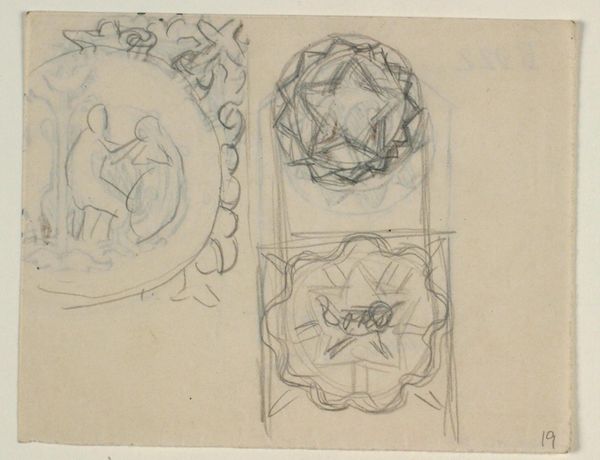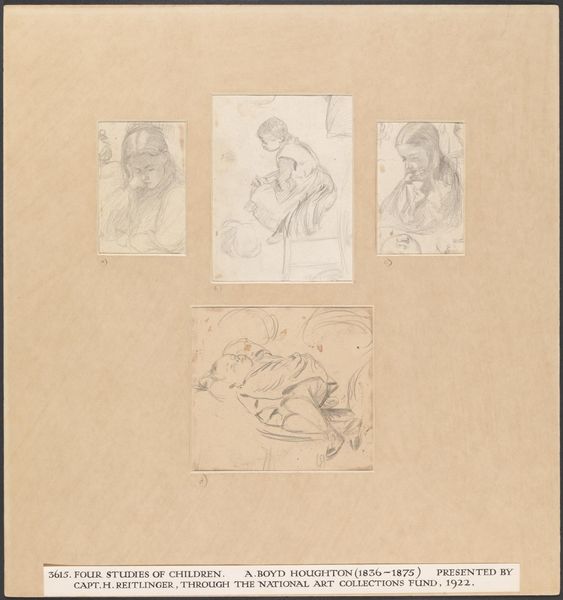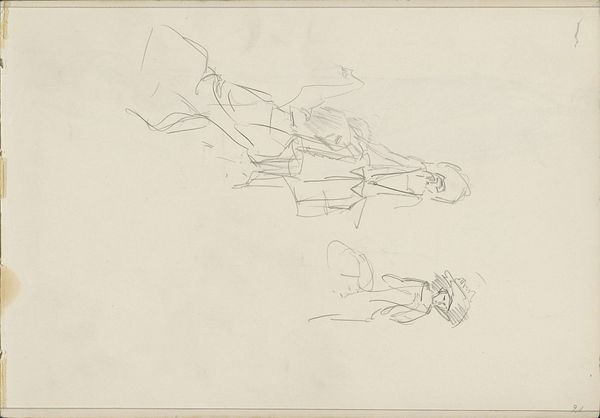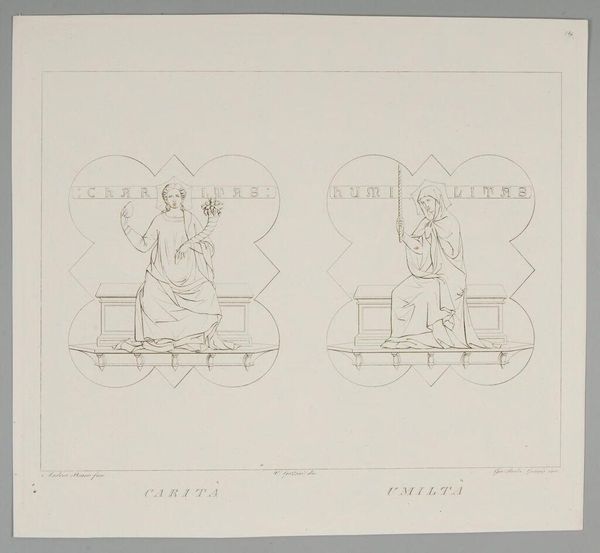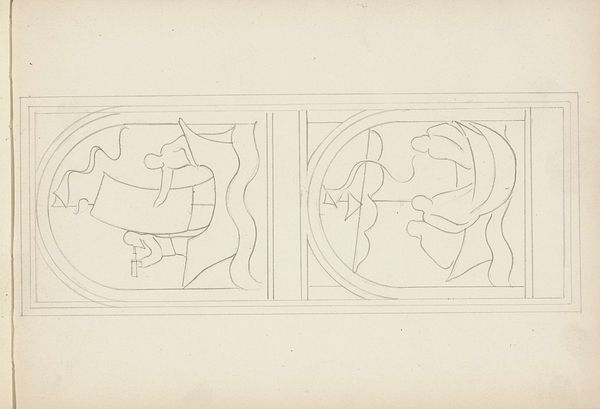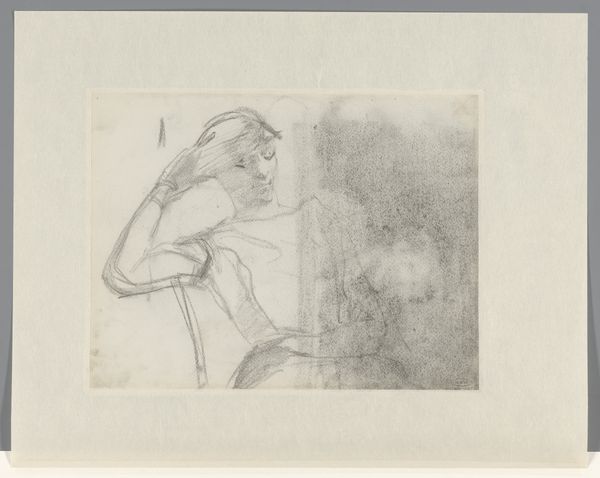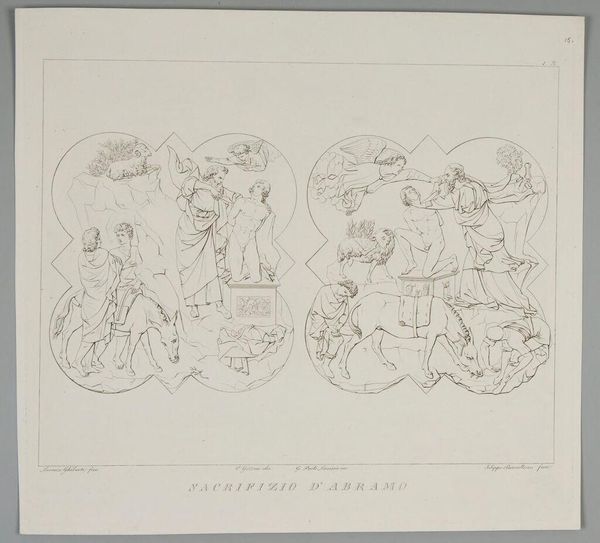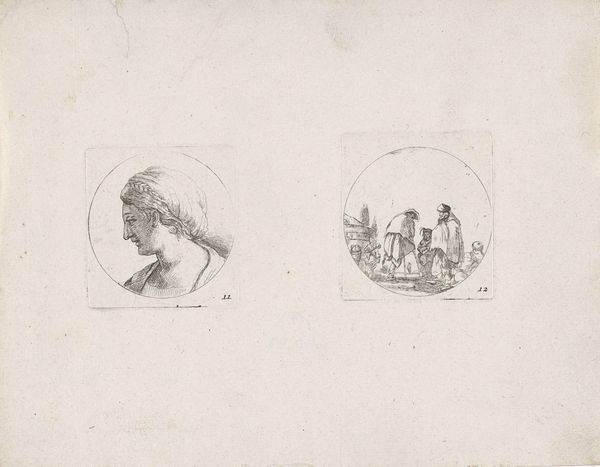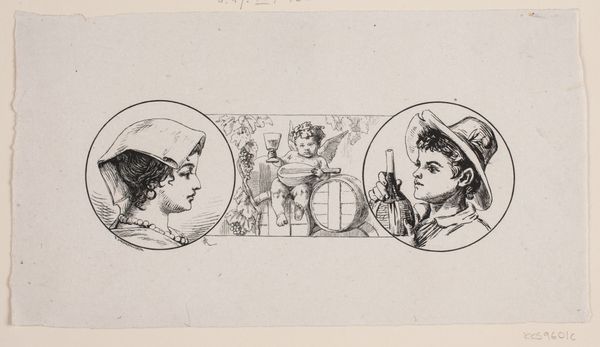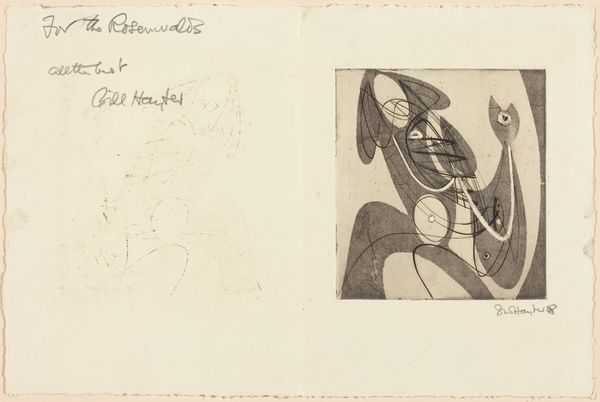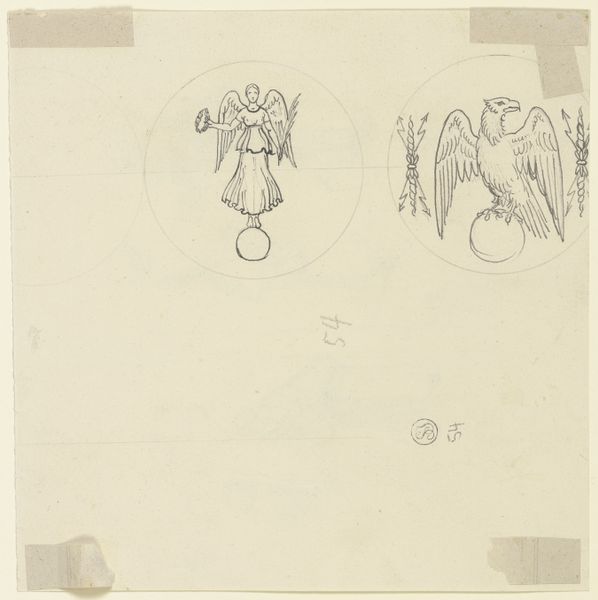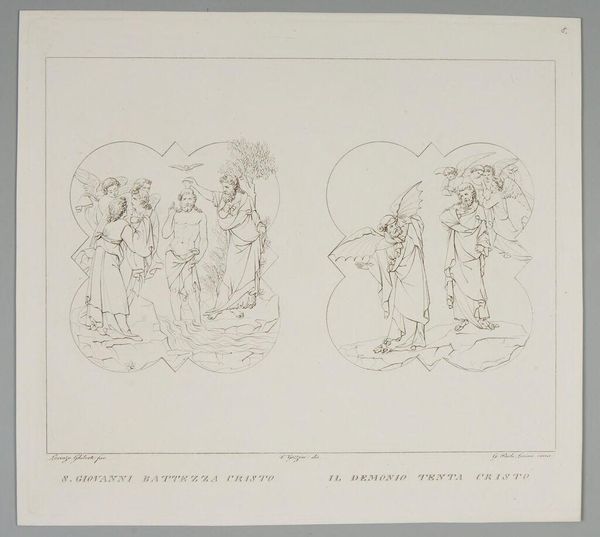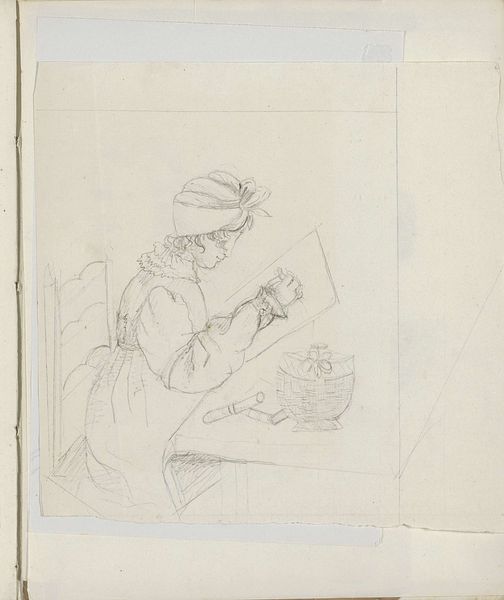
drawing, paper, ink, pen
#
portrait
#
drawing
#
art-nouveau
#
pen sketch
#
paper
#
ink
#
pen
Copyright: Rijks Museum: Open Domain
Editor: This is "Ontwerpen voor een bord," or "Designs for a Plate," created around 1905-1910 by Carel Adolph Lion Cachet. It’s currently housed here at the Rijksmuseum. It’s a pen and ink drawing on paper and looks like a series of preliminary sketches. The bottom one is quite striking; the woman with a hat reminds me of Art Nouveau posters. What draws your attention in this piece? Curator: I am immediately struck by the economy of line. The artist’s deliberate mark-making, especially in the lower sketch, evokes form with incredible efficiency. Consider the contour of the hat – a single, unwavering stroke defining its shape and casting shadow simultaneously. The contrast between the solid black and the negative space generates dynamism. What do you make of the artist's decision to use such stark tonal variations? Editor: Well, the strong contrasts do create a visual punch. It emphasizes the flatness of the design, and the shapes almost become abstract patterns. Curator: Precisely. Notice, too, how the ornate border, though decorative, complements rather than detracts from the central figure. The repetition of the curved lines echoes the curves of the hat and hair, creating a cohesive visual language. Also the paper shows the traces of earlier conceptions, a ghost of attempts past if you will. Editor: I see what you mean about the relationship between the figure and the border. They really do work together. Is there a term for this specific type of relationship between positive and negative space? Curator: One might consider this a clear use of figure/ground relationship within Gestalt principles of perception; each element depends on another. It emphasizes the conscious formal decisions that Cachet employs when working through his composition. Editor: This has helped me look at it with more attention to form and intention rather than just historical elements. Curator: Indeed. Approaching art through formal analysis offers an additional tool, appreciating an artist’s decisions independent of the historical moment, even.
Comments
No comments
Be the first to comment and join the conversation on the ultimate creative platform.

